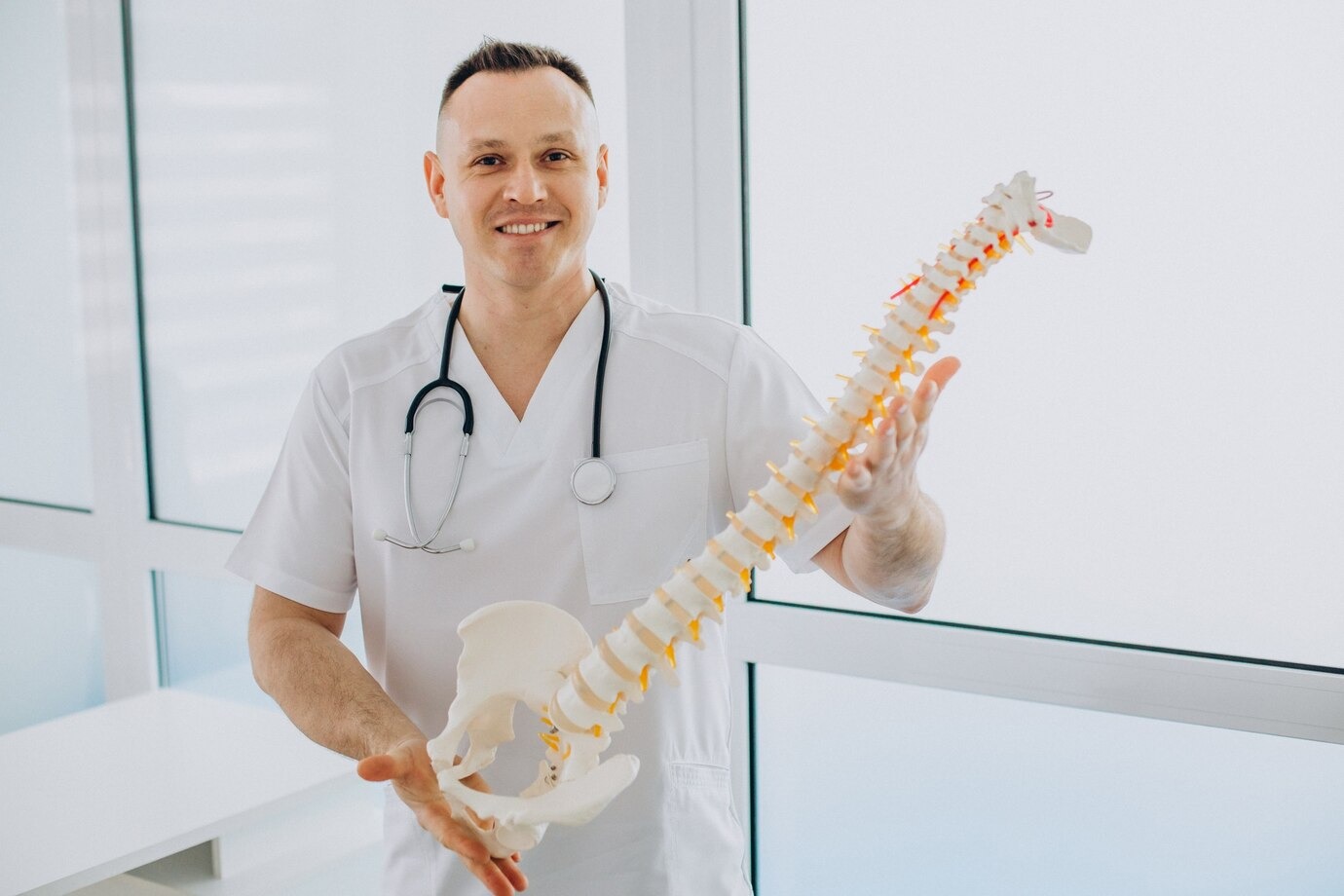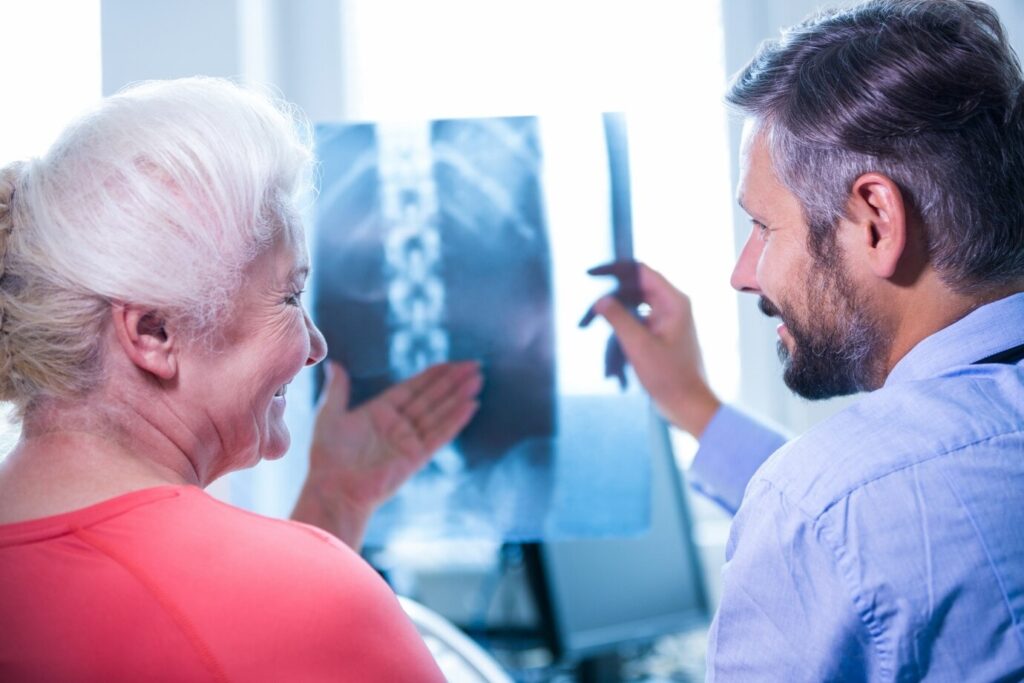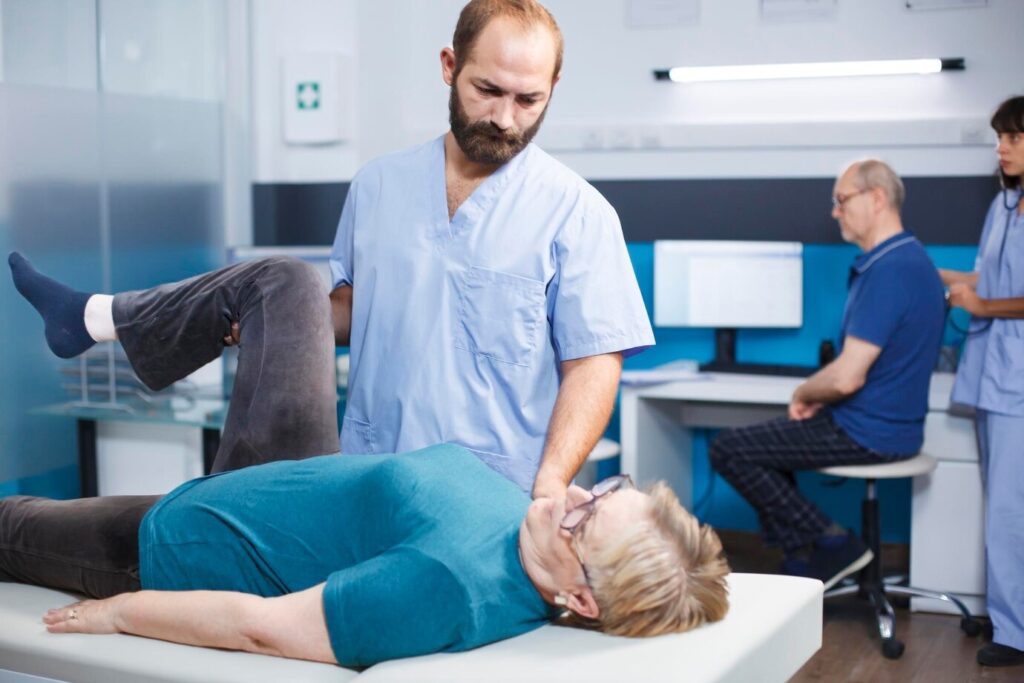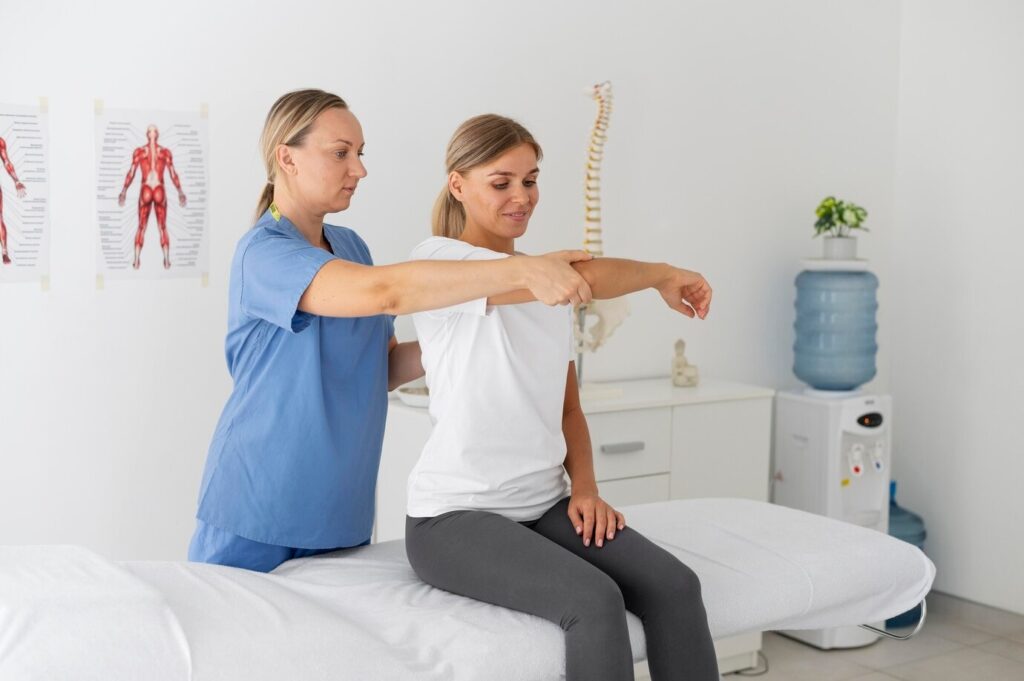
Table of Contents
Understanding Spine Health: The Foundation of Well-Being
The Complexity of the Spine: An Anatomical Overview
The spine, or vertebral column, is a complex structure that comprises 33 individual vertebrae classified into different regions: cervical, thoracic, lumbar, sacral, and coccygeal.
This intricate organization allows the spine not only to support the weight of the body and provide a stable frame, but it also protects the spinal cord — a major component of the central nervous system.
Each vertebra in the spine is separated by intervertebral discs that serve as shock absorbers, allowing for flexibility and range of motion.
The discs, made up of a gel-like center (nucleus pulposus) encased within a tougher exterior (annulus fibrosus), play a critical role in spinal health.
Moreover, the spine does not act alone. It integrates with various muscle groups, ligaments, and nerves to facilitate movement and maintain balance and posture.
The significance of this anatomical complexity cannot be overstated, as even minor deviations—such as a herniated disc or spinal stenosis—can result in significant pain and dysfunction.
Consequently, understanding the anatomy of the spine lays the groundwork for recognizing potential health issues and underscores the importance of professional care from specialists who are trained to diagnose and treat these complexities.
Common Spine Conditions: What You Need to Know

Source: freepik.com
Spine health can be compromised by a variety of conditions, each presenting its own challenges and symptoms. Some of the most prevalent issues include herniated discs, degenerative disc disease, spinal stenosis, and scoliosis.
A herniated disc occurs when the inner gel of the disc bulges out, pressing on nearby nerves and causing pain, numbness, or weakness that can radiate into the limbs. Conversely, degenerative disc disease is a term encompassing the natural wear and tear of spinal discs, often leading to chronic pain and stiffness as the cushioning ability diminishes.
Spinal stenosis is characterized by the narrowing of the spinal canal, which can compress the spinal cord and nerves, resulting in pain, tingling, or motor weakness.
Scoliosis, on the other hand, is a lateral curvature of the spine that often develops during childhood or adolescence, leading to postural imbalances and discomfort. Recognizing these conditions early is essential for effective treatment and management.
Regular check-ups with specialists, especially if you are experiencing recurrent back pain or mobility issues, can help in identifying these conditions before they escalate into more serious problems.
The Importance of Early Diagnosis and Treatment
Early diagnosis of spinal issues is paramount to effective treatment, as it can significantly alter the course of the condition and the patient’s overall quality of life. Delayed intervention may lead to chronic pain, permanent damage, and further complications arising from untreated spinal conditions.
For instance, a herniated disc left untreated can result in nerve damage that may become irreversible, leading to long-term motor function impairments. The nuances of spine health necessitate specialized diagnostic tools, such as MRI scans and X-rays, which help pinpoint the specific anatomy involved and identify the extent of damage or degeneration.
This facet of early diagnosis highlights the necessity of a comprehensive assessment by a trusted spine specialist. Only they can recommend the most appropriate and effective treatment strategies tailored to the individual—be it physical therapy, medication, or surgical intervention.
This personalized approach lays the groundwork for enhanced recovery and improved outcomes, reinforcing the crucial role that early diagnosis plays in spine health management.
Innovative Treatments at Georgia Spine Specialists: Cutting-Edge Care

Source: freepik.com
Minimally Invasive Procedures: Benefits and Risks
Minimally invasive spine surgery (MISS) has revolutionized the way spine conditions are treated, offering patients options that often result in less pain, shorter recovery times, and lower risks compared to traditional open surgery.
Techniques such as microdiscectomy or spinal fusion involve smaller incisions, which minimizes trauma to the surrounding tissues and muscles. Additionally, these procedures can often be performed using advanced imaging technology, which enhances accuracy and safety during the operation.
However, while MISS has significant advantages, it is critical to recognize that no procedure is without risks. Complications can include infection, nerve damage, or inadequate relief of symptoms, necessitating further procedures.
Thus, the efficacy of minimally invasive techniques largely depends on the patient’s specific spinal condition, overall health, and the skill of the surgical team.
Georgia spine specialists thorough pre-surgical evaluations ensure that every patient is well-informed and guided toward the best procedure for their unique circumstances.
Revolutionary Techniques in Pain Management
Modern medicine continually unveils innovative techniques for pain management that complement traditional treatment paths. One such advancement is the use of regenerative medicine, including treatments like platelet-rich plasma (PRP) injections and stem cell therapy.
These therapies aim to promote healing and tissue regeneration by using the body’s own growth factors or stem cells to repair damaged spinal tissues and alleviate pain potentially.
Furthermore, advanced interventional procedures, such as epidural steroid injections and nerve blocks, provide immediate pain relief by targeting the source of the pain.
Electrical stimulation therapies, including spinal cord stimulation, are also gaining popularity, where mild electrical pulses disrupt pain signals being sent to the brain.
These groundbreaking approaches, particularly when personalized and integrated into a comprehensive treatment plan, are opening new avenues for managing chronic pain effectively, allowing patients to regain a better quality of life.
How Personalized Treatment Plans Enhance Recovery
Personalization in treatment plans is at the forefront of modern medical practice, particularly in spinal health. Georgia spine specialists offer a comprehensive assessment that leads to a tailored approach that considers a patient’s specific condition, lifestyle, and treatment goals.
This individualized strategy ensures that interventions — whether they’re surgical or conservative, like physical therapy — align with the patient’s unique physiological makeup and expectations.
The necessity of personalized plans becomes evident when considering underlying health conditions that can influence recovery, such as obesity, diabetes, and age-related factors. A multi-disciplinary team comprising physicians, therapists, and nutritionists collaborates to optimize recovery pathways.
By integrating physical rehabilitation, nutritional counseling, and mental health support, Georgia spine specialists ensure that patients are not just treated as isolated cases but as individuals whose overall well-being is critical for successful recovery.
This approach fosters a collaborative environment and empowers patients to take an active role in their healing process, leading to more sustainable outcomes.
Empowering Your Recovery: Rehabilitation and Aftercare

Source: freepik.com
Physical Therapy: The Key to Regaining Strength
Post-treatment recovery plays a pivotal role in regaining strength and function after spinal surgery or other interventions. Physical therapy is a cornerstone of rehabilitation, aimed at restoring mobility, flexibility, and strength to the back and surrounding muscles.
A well-structured physical therapy program includes targeted exercises, manual therapy, and education on body mechanics which can greatly enhance the recovery experience. Georgia spine specialists understand the intricacies of spinal conditions and customize rehabilitation protocols to fit individual needs.
Patients are gradually guided from foundational exercises to more complex movements, ensuring a safe progression that respects the healing process.
Engaging in physical therapy not only helps to alleviate pain but also fosters a greater understanding of one’s body, equipping patients with the tools and strategies needed to maintain spine health and prevent future injuries.
Integrative Approaches: Combining Medicine with Lifestyle Changes
A comprehensive recovery plan goes beyond just physical rehabilitation; it encompasses a holistic approach that combines both medical interventions and lifestyle modifications.
This integrative approach may include stress management techniques, such as mindfulness and yoga, which have been shown to improve mental health and, consequently, physical recovery processes.
Nutrition is another critical factor; a balanced diet rich in anti-inflammatory foods can enhance healing and overall well-being. Collaborating with dietitians allows patients to understand the direct impact of nutrition on their recovery.
Moreover, lifestyle changes such as regular exercise, ergonomic adjustments in the workplace, and improving sleep hygiene can significantly influence recovery outcomes and promote long-term spine health.
This holistic, integrated approach recognizes that healing is not just about treating the immediate issue but about fostering a healthier lifestyle that can prevent future complications.
Setting Realistic Expectations: What You Can Anticipate Post-Treatment
One of the most important aspects of recovery is setting realistic expectations. Patients often come into treatment hoping for a quick fix; however, understanding that healing is a gradual process is essential for mental well-being.
The timeline for recovery can differ significantly based on the nature of the spine condition, the type of treatment received, and the individual’s pre-existing conditions and lifestyle choices.
Georgia spine specialists provide clear communication about what can be expected post-treatment. Patients are educated on the typical recovery timeline, the potential for temporary discomfort during rehabilitation, and the milestones to aim for.
Encouragement to maintain a positive mindset, establish a support system, and adhere to prescribed rehabilitation programs help cultivate resilience during the recovery journey. Patients are reminded that progress may fluctuate, and consistency in commitment to the recovery process is key to long-term improvements.
Choosing the Right Specialist: Your Healthcare Partners

Source: freepik.com
What to Look For in a Spine Specialist
Selecting the right spine specialist is a crucial decision that can significantly impact the quality of care and treatment outcomes. When evaluating potential specialists, several factors should be considered.
Firstly, the credentials and experience of the physician are paramount. Look for board certification in orthopedic surgery or neurosurgery, along with a specialization in spine care.
Understanding their experience in handling specific conditions can be beneficial; for example, if you are diagnosed with scoliosis, seek out specialists who develop treatment plans tailored for that condition.
Another critical factor is the approach to treatment. A good spine specialist should prioritise a comprehensive and conservative evaluation of your condition before recommending more invasive measures.
This may include a thorough discussion of the benefits and risks of various treatment options, as well as your prospective post-treatment recovery processes.
Communication is also key—ensure the specialist provides clear answers to your questions and involves you in the decision-making process regarding your health plan.
Building a Collaborative Relationship with Your Care Team
Healthcare is a collaborative effort, and establishing a strong relationship with your care team is vital for successful outcomes. An open dialogue with your spine specialist, physical therapists, and any additional support staff fosters a partnership that can improve adherence to treatment plans and overall satisfaction with care.
The approach emphasizes patient involvement, encouraging individuals to voice their concerns, preferences, and expectations regarding their treatment journey. Regular check-ins and follow-up appointments enhance accountability and allow for adjustments in the treatment plan based on patient feedback and progress.
This engagement cultivates a sense of empowerment in patients, instilling confidence in their care team and underscoring the importance of a united approach in managing spine health.
Patient Success Stories: Real Experiences, Real Results
Hearing about real success stories can be incredibly encouraging for individuals grappling with spine health issues. Numerous patient testimonials highlight the transformative impact of well-executed interventions and comprehensive care on their lives.
For instance, a patient suffering from debilitating lower back pain recounted how minimally invasive surgery followed by a robust rehabilitation program granted them the ability to return to their active lifestyle, engaging in hobbies they had long since given up.
Such success stories do not just stand as isolated instances; they reflect a common understanding of the efficacy of tailored treatment plans and the benefits of an integrative approach to recovery.
They represent hope and motivation for new patients embarking on their own journeys through spine care. These narratives highlight that with the right care, support, and persistence, individuals can reclaim their mobility, eradicate pain, and ultimately lead happier, healthier lives.







